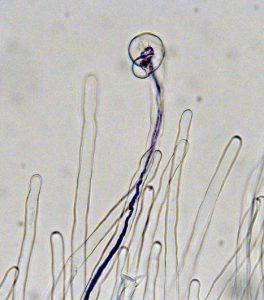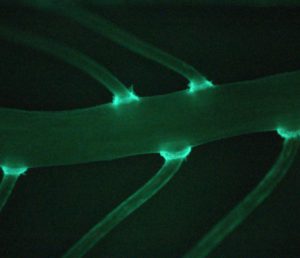Setting up symbiotic programs
The chairs
- Fernanda De Carvalho-Niebel is a CNRS research director at the LIPME in Toulouse.
- Jean-Malo Couzigou is a CNRS researcher at the LRSV in Toulouse.
Description of the working group
Terrestrial plants have the remarkable ability to establish mutualistic associations with soil microbes to acquire nutrients essential to their growth. In specialized root endosymbioses, the plant hosts its microbial partners within its cells to enable efficient acquisition of nutrients (e.g. phosphorus, nitrogen) in exchange for carbon sources.

However, this requires the formation of new root symbiotic exchange structures, such as the tree-shaped intracellular fungal arbuscules, formed inside root cortical cells during arbuscular mycorrhizal (AM) associations with Glomeromycota fungi, or specialized root nodules inhabited by intracellular ”rhizobium” or Frankia nitrogen-fixing bacteria. Despite great differences in their mode of nutrient acquisition and host ranges, the establishment of the more ancient (arbuscular mycorrhiza) to most recent nitrogen-fixing symbioses, is guided by an ancestral signalling program enabling intracellular microbial accommodation.

In all cases, precise signal exchanges between the plant and the microbial partners are required before the activation of a calcium-dependent symbiotic signalling pathway, in which specific symbiotic transcription factors orchestrate the establishment of symbiotic programmes enabling microbial root entry and intracellular accommodation. Although we have learned a lot about the genetic pathways and key players of these root endosymbioses, important questions remain about the mechanisms that fine-tune microbial infection and organ formation. Researchers in the SYMBIPHYT network use a variety of model systems (e.g. Medicago, Mimosa, Lupinus, soybean, Arachis, Casuarina…) establishing symbioses with different microbes (e.g. Glomeromycota fungi, Frankia and rhizobia bacteria) and aim to understand the core of molecular and cellular mechanisms underlying the successful endosymbiotic colonization of their host, and the coordinated development of symbiotic nodules. A deeper understanding of these mechanisms and their modulation by different factors is essential in order to exploit their potential in in future applications for sustainable agriculture.


